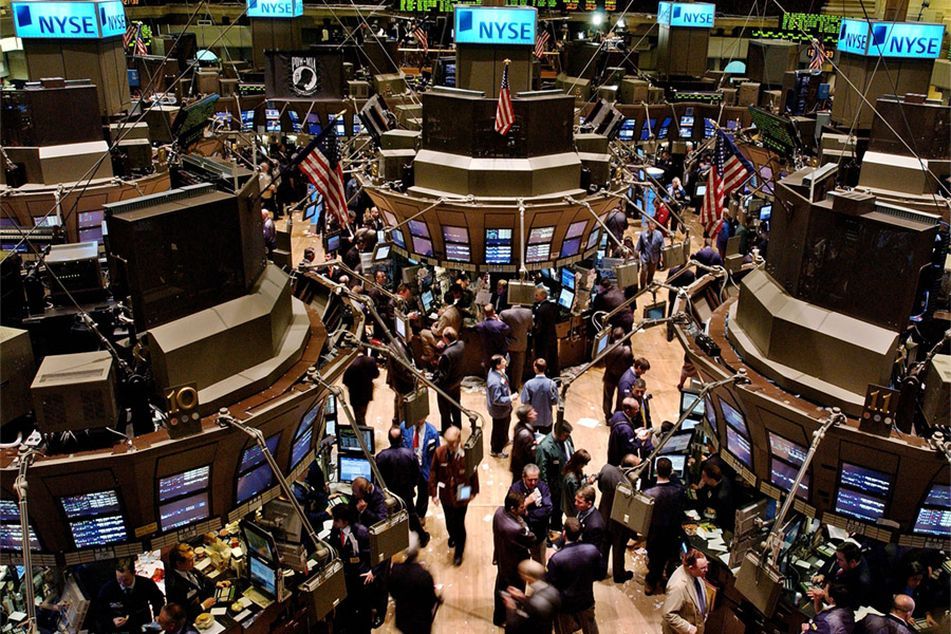Small-cap stocks best large-cap, while growth stocks continue to trounce value
 NEW YORK - JANUARY 26: Traders work on the floor of the New York Stock Exchange January 26, 2004 in New York City. Trading was mixed as investors waited for about 100 companies to report earnings this week. The market seemed focused on drug stocks, as European pharmaceutical firm Aventis rejected a hostile takeover bid by rival Sanofi. (Photo by Stephen Chernin/Getty Images)
NEW YORK - JANUARY 26: Traders work on the floor of the New York Stock Exchange January 26, 2004 in New York City. Trading was mixed as investors waited for about 100 companies to report earnings this week. The market seemed focused on drug stocks, as European pharmaceutical firm Aventis rejected a hostile takeover bid by rival Sanofi. (Photo by Stephen Chernin/Getty Images)
Latest SPIVA scorecard contains mostly expected results, but a few surprises, too.
Growth stocks are trouncing value. Small caps are beating large. And more professional managers are beating their benchmarks now than a year earlier.
Those are only some of the details from the latest S&P Indices Versus Active Funds U.S. Scorecard, or SPIVA. Twice a year, Standard & Poor’s Indices group releases this deep dive into mutual-fund performance. It analyzes funds by capitalization levels and investment styles to review their performance versus various benchmarks.
OK, a quick caveat: S&P is one of the world’s largest index providers, so it obviously has a dog in this fight. Still, it brings big resources to bear on the simple question of, “How is your portfolio doing this year?”
The results for the 12-month period ended June 30 do contain a few surprises, though most of the results are as expected — active management still tends to lag passive, small caps tend to beat large. Sifting through the details can be a worthwhile exercise.
Small versus big: Let’s start with the good news first: For investors in U.S. equity markets, returns have been strong. Small-cap stocks (S&P SmallCap 600) did best, gaining 20.5%, followed by large and mid-caps (S&P 500 & MidCap 400), which gained 14.4% and 13.5%, respectively.
Growth versus value: There is more good news if you are in the growth camp: It has been trouncing value for the past decade. Indeed, active managers of growth funds have done extremely well across all market capitalizations. They have beaten their benchmarks by 63.7%, 68.5% and 58.0% for large-, mid-, and small-cap funds, respectively. Whether that is a result of the rise of big dominant tech companies or the postcrisis recovery we can’t say for sure.
Earnings gains are the key: What helps to explain the advantages of growth over value? Gautam Dhingra of High Pointe Capital Management points out that earnings for growth stocks have been strong in this period, gaining 84%, while earnings for value stocks rose 30%. The net result is that since the end of the financial crisis, growth stocks outperformed their value counterparts by 144% net of fees, S&P said. That big difference in earnings gains explains much of the performance difference.
Time matters: Note that these advantages depend upon the time frame. The past month of market volatility hints at conditions that normally lead value to beat growth. The advantages for growth since the 2009 lows owe to the rapid recovery from that bottom and the long rally since then. But when we look at periods that include bull and bear markets, the results are quite different. Consider the time frame from March 2000 to the present — a period that includes both the dot-com implosion and the financial crisis. The performance advantage of growth disappears. Over that 18-year period, value outperformed growth by 157 percentage points.
When will the performance advantage of value re-emerge? Mean reversion is likely to occur once we enter a new bear market.
Active versus passive: Some more good news for active fund managers: during that same 12-month period, the overall percentage of active funds that outperformed their benchmarks rose to 42% from 36.6%.
Alas, that seems to be where the good news ends, and the longer the time period, the worse things look. The majority of actively managed equity funds still underperformed their benchmarks. Over the prior five-year period, 76.5% of large-cap, 81.7% of mid-cap and a whopping 92.9% of small-cap managers lagged their respective benchmarks. At 10 years and 15 years, the numbers are even worse for active managers.
The conclusion is as unsurprising as it is inescapable: For the vast majority of investors, inexpensive indexes are a superior bet to expensive actively managed funds.
Yes, some star fund managers do outperform the markets. But the odds are heavily stacked against the average investor of 1) finding that manager, and 2) not paying high fees that eat up much of those market-beating returns.
Barry Ritholtz is a Bloomberg Opinion columnist. He founded Ritholtz Wealth Management and was chief executive and director of equity research at FusionIQ, a quantitative research firm. He is the author of “Bailout Nation.”
Learn more about reprints and licensing for this article.








